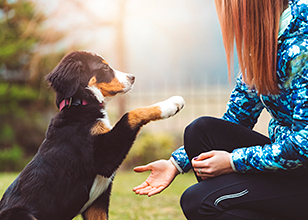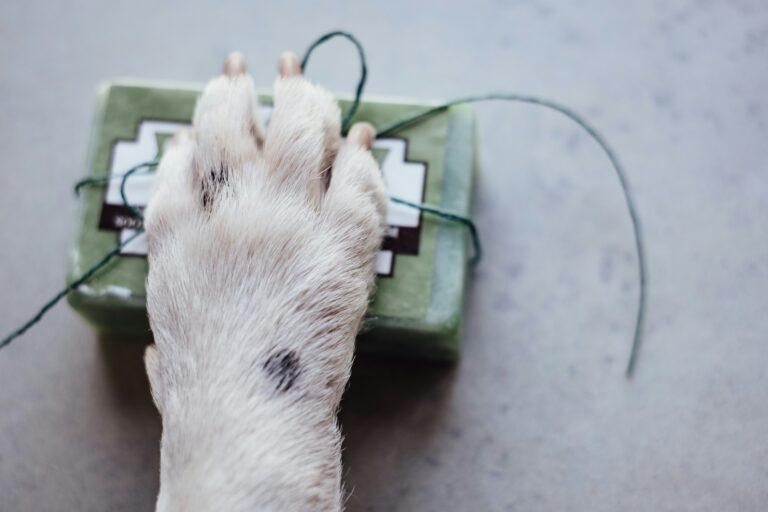In the realm of dog ownership, a perennial debate surrounds the best method for managing your petite pup’s environment – is it the structure of crate training or the freedom of free roaming? This discussion has sparked much controversy among dog lovers, with strong arguments from both sides. But, the choice is far from arbitrary. It impacts not only your beloved pet’s happiness and wellbeing but also your peace of mind. This post aims to unravel the mystery of this small dog dilemma, provide insights into the pros and cons of each option, and help you make an informed decision that suits both you and your pint-sized pooch.

Canine lovers are often torn between these two popular strategies. Crate training, seen by some as a vital part of puppyhood, provides a secure, private space for your furry friend. Advocates argue that it helps with house training, prevents destructive behavior and serves as a safe haven. On the other side of the spectrum, free roaming gives your dog unrestricted access to the home, promoting exploration and independence. Critics of crate training favor this method, asserting that it allows for a happier and more active pet.
Within this post, we will delve into the nitty-gritty of both options. We’ll explore scientific findings, expert opinions, and anecdotal evidence to present a comprehensive comparison of crate training vs. free roaming. This is not about declaring a universal winner, but about equipping you with the knowledge to determine which option reigns supreme for your specific situation and your pint-sized pooch. The aim is to cultivate a harmonious living situation that keeps your dog healthy, happy, and well-adjusted, while also maintaining the sanctity of your home. So, let’s dive in and demystify this small dog dilemma!
Choosing the Right Crate for Your Small Dog
Selecting the appropriate crate is the first step toward successful crate training. Not all crates are created equal, and finding the perfect one for your dog can make a significant difference in their comfort and willingness to use it. When choosing a crate, consider the material, size, and functionality.
Wire crates offer excellent ventilation and visibility, making them a popular choice for small breeds. They often come with adjustable dividers, which allow the crate to grow with your puppy. Plastic crates, typically used for airline travel, provide a den-like atmosphere that some dogs find comforting. Soft-sided crates are lightweight and portable, ideal for travel, but may not be suitable for dogs who like to chew.
Measure your dog carefully to ensure the crate is the correct size. Your pup should have enough room to stand, turn around, and lie down without feeling cramped. Avoid crates that are too large, as they may encourage your dog to eliminate in one corner and sleep in another.
Introducing Your Dog to the Crate
A slow and positive introduction to the crate is crucial. Start by placing the crate in a common area where your family spends time. Leave the door open and let your dog explore at their own pace. Place soft bedding, toys, and some treats inside to make the crate inviting.
Use positive reinforcement by rewarding your dog every time they show interest in the crate. Gradually increase the time your dog spends inside with the door closed. Begin with short periods while you are home, progressing to longer times as they become more comfortable. Never force your dog into the crate, as this can create negative associations.
Creating a Positive Crate Experience
To ensure the crate becomes your dog’s safe space, always associate it with positive experiences. Feed your dog their meals inside the crate, give them special toys or chew treats when they are crated, and speak to them in a calm, reassuring voice.
Avoid using the crate for punishment. If the crate is perceived as a negative place, your dog may resist going inside and become anxious. Instead, make the crate a reward—a cozy retreat where they can relax and feel secure.
Maintain a predictable schedule, so your dog knows when it’s time to go into the crate and when they will be let out. This predictability reduces anxiety and helps your dog feel more at ease.
Establishing a Crate Training Routine
Consistency is key in crate training. Develop a routine that includes crate time during naps, bedtime, and when you are away. Regular crate use helps reinforce the idea that the crate is a normal part of daily life.
For puppies, crate training is especially effective for housebreaking. Take your puppy outside immediately after they wake up, after eating, and after playtime. Praise and reward them for eliminating outside. Over time, your puppy will learn to hold their bladder and wait until they are taken out.
Monitor the amount of time your dog spends in the crate. Puppies, in particular, should not be crated for more hours than their age in months plus one. For example, a three-month-old puppy should not be crated for more than four hours at a time.
Overcoming Crate Training Challenges
Some dogs may initially resist crate training. Whining, barking, or scratching at the crate are common behaviors during the early stages. It’s important to distinguish between a dog who needs to relieve themselves and one who is protesting.
If your dog whines in the crate, wait until they are quiet before letting them out. Otherwise, they may learn that whining gets them what they want. Be patient, and gradually build up the time they spend in the crate.
In cases of severe crate anxiety, it may be helpful to seek guidance from a professional dog trainer or behaviorist. Sometimes, crate aversion stems from negative past experiences, and it requires careful rehabilitation to rebuild positive associations.
Crate Training and Separation Anxiety
Properly introduced, a crate can be a valuable tool for dogs with mild separation anxiety. It provides a safe, familiar environment that can help reduce stress when the owner is away. However, crate training is not a cure for severe separation anxiety and should be part of a broader behavior modification plan.
Use the crate in conjunction with gradual departures and arrivals to minimize excitement and anxiety. Practice leaving your dog in the crate for short periods while you are still at home, gradually extending the time. Create a calming environment with white noise or soft music to mask external sounds that may trigger anxiety.
Crate Training at Night
Crating your small dog at night can be an effective way to prevent nighttime accidents and ensure they get restful sleep. Place the crate in your bedroom or nearby, so your dog feels reassured by your presence.
If your puppy whines at night, it’s important to determine whether they need a potty break or are simply seeking attention. Young puppies often need a nighttime potty trip. Keep interactions calm and minimal during these breaks to reinforce that nighttime is for sleeping, not playing.
Over time, your dog will adjust to sleeping through the night in their crate, contributing to a healthier sleep routine for both of you.
Transitioning Out of the Crate
As your dog matures and proves their reliability, you may choose to gradually reduce their reliance on the crate. Start by allowing them supervised free time in a small, dog-proofed area while you are home. Gradually extend their freedom as they demonstrate good behavior.
Continue to leave the crate available as a resting place. Many dogs, even those no longer confined, will choose to nap in their crate because they view it as their personal den.
Some owners prefer to keep using the crate for life, especially for travel, vet visits, or when guests visit. Maintaining positive associations with the crate ensures it remains a beneficial tool throughout your dog’s life.
The Role of Crate Training in Potty Training
Crate training plays an integral role in potty training, particularly for small breeds that have smaller bladders and faster metabolisms. By restricting your dog’s space, you minimize opportunities for accidents and teach bladder control.
Always supervise your dog closely when they are outside the crate and take them to their potty area frequently. Accidents should be cleaned up thoroughly with enzymatic cleaners to prevent residual odors that might encourage repeat offenses.
Using a consistent command, such as “Go potty,” reinforces the behavior you want and can later be used to prompt your dog to eliminate on command.
Long-Term Crate Use and Ethical Considerations
Crate training, when used properly, is a humane and effective tool for managing your dog’s behavior. However, it’s important to ensure that the crate is not misused as a place of punishment or confinement for excessive periods.
Dogs are social animals and need daily interaction, exercise, and mental stimulation. Crating for extended periods without breaks can lead to physical and psychological issues, including muscle atrophy, anxiety, and depression.
A good rule of thumb is that crate time should not exceed eight hours a day for adult dogs, and considerably less for puppies. If your schedule requires longer absences, consider hiring a dog walker, enrolling in doggy daycare, or arranging for a trusted friend or family member to assist.
By respecting your dog’s needs and using the crate responsibly, you can ensure that crate training remains a positive part of their life.
Understanding Free Roaming
Free roaming, as the term suggests, allows your dog to have unrestricted access to your home or a designated area within it. Unlike crate training, free roaming does not confine your dog to a limited space. However, this method requires your dog to be properly house trained, as they have the freedom to relieve themselves wherever they choose.
Benefits of Free Roaming
- Exercise: Dogs have more opportunities to exercise when they are free to roam. This can be particularly beneficial for high-energy breeds.
- Mental stimulation: Free roaming can provide dogs with more mental stimulation, as they are free to explore and interact with their environment.
- Socialization: Dogs who free roam may have more opportunities to socialize with other pets or people in the household.
Crate Training vs. Free Roaming: Which is Best for Small Dogs?
The choice between crate training and free roaming depends largely on the individual dog and the owner’s circumstances. Some dogs feel safe and comfortable in a crate, while others may feel confined and anxious. Similarly, while some dogs can handle the freedom of free roaming without causing chaos, others may become anxious, destructive, or develop bad habits such as soiling inside.

It is crucial to observe your dog’s behavior under both circumstances to decide which method is best. Some dogs may prefer the safety and security of a crate, while others might thrive when given more freedom.
Considerations in Choosing Between Crate Training and Free Roaming
- Age: Puppies are typically more receptive to crate training as it helps with housebreaking and preventing destructive behavior. Older dogs might find sudden confinement stressful, especially if they have been free-roaming all their lives.
- Behavior: Dogs that display destructive behaviors when left alone might benefit more from crate training. On the other hand, dogs that are calm and well-behaved might do well with free roaming.
- Schedule: Crate training requires a consistent schedule for feeding and toilet breaks. If you can’t provide this, free roaming might be a better option.
Training Tips for Both Methods
Whether you choose to crate train or let your small dog free roam, there are certain training strategies that can be beneficial.

For crate training, it is essential to make the crate a positive and safe space for your dog. Never use it as a punishment. Always ensure your dog has access to fresh water and a comfortable bed inside the crate.
For free roaming, it is important to thoroughly dog-proof the areas of your home where your dog will have access. Remove toxic plants, secure loose wires, and make sure there is nothing that can harm your small dog.
In both scenarios, patience, consistency, and positive reinforcement are key. Remember, each dog is unique, and what works for one might not work for another. It is all about finding the right balance for your pint-sized pooch!
Conclusion
In conclusion, the choice between crate training and free roaming for your small dog hinges on various factors, such as your pet’s personality, the environment, and your ability to supervise. Both options have their pros and cons. Crate training provides a safe haven for your pooch, aids in potty training, and prevents destructive behavior when unsupervised. However, it requires consistent training and shouldn’t be used as a form of punishment.
On the other hand, free roaming gives your dog freedom to explore and engage in natural behaviors. However, it can be risky if your home isn’t dog-proofed or if your pet is prone to anxiety or destructive behavior.
Ultimately, it’s about striking a balance. You may consider combining both strategies, crate training your pint-sized pooch when you can’t supervise, and allowing free roaming when you’re around to monitor. Remember, the health, happiness, and safety of your pet should reign supreme in your decision-making process. Regular exercise, mental stimulation, and quality time with your pet are also key, regardless of your choice. Therefore, no one-size-fits-all answer exists to the ‘small dog dilemma’, but rather a customized solution that best suits you and your furry friend. 🐾🐕



